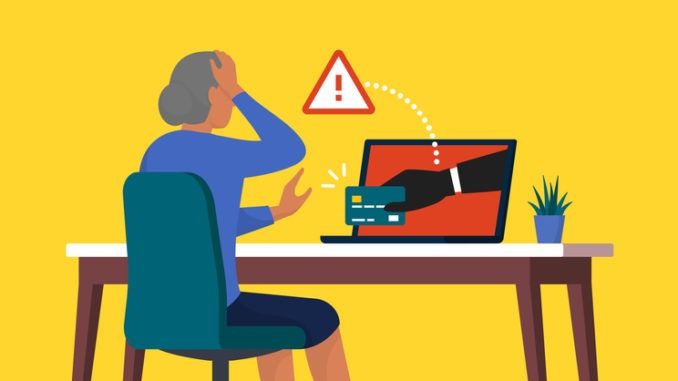
As COVID-19 accelerates the NHS’s shift to a high tech future, Stephen Armstrong considers the patients being left behind by the digital gold rush
This is an edited version of an article that originally appeared on The BMJ
‘Digital government—the ongoing use of digital technology and techniques to transform how government delivers public services, provides information, and functions as an organisation—has played a key part in the [pandemic] response, ensuring the continuity of existing services and the creation of new ones’, wrote the Institute for Government think tank last year.
The NHS app already enabled patients with smartphones to check symptoms, book appointments, order repeat prescriptions and access their medical records before it became a potential ‘COVID-19 passport’ to show vaccination status and recent test results; the government heralded the NHS COVID 19 Track and Trace app as central to reopening hospitality venues as lockdown restrictions eased.
In the early days of the pandemic general practice transformed, ‘rapidly adopting digital approaches to triaging and consulting at a speed that would have been unthinkable just months before’, said the King’s Fund think tank in February. Face-to-face GP consultations became “out of date almost overnight,” Mark Harmon, a general practitioner and strategic director of the digital triage tool eConsult, told The BMJ. He cited one general practice, Beacon Medical Group in Devon, that reduced its face-to-face appointments to just seven per cent. This digital gold rush, however, is in danger of dismantling one of the founding principles of the NHS—equal access to the health system for all.
Lack of broadband
It’s hard to get accurate figures on the scale of digital health inequity. The Health Foundation, a think tank, found that about three fifths of NHS users increased their use of technology to access care in the first phase of the pandemic, in a representative survey of 4,000 UK adults. Although 83% viewed their experience positively, 42% said the use of technology made for worse quality of care.
Ofcom says that only 6% of UK homes (roughly 1.5m) have no internet access. But the Ida Lovelace Institute, which was established ‘to ensure that data and AI work for people and society’, found that a fifth of people in the UK do not have access to a smartphone, and 14% do not have broadband internet. The nationally representative survey it commissioned also found that 60% of the UK public have not heard of symptom tracking apps, and just over half have not heard of the availability of online medical appointment services. A similar proportion think it is likely that vaccine passports would lead to discrimination against marginalised groups. Newspapers have even reported older customers being turned away from pubs for not having the Track and Trace smartphone app, despite no government requirement to use it.
“We’ve heard from lots of older people who can’t engage with things like eConsult,” says Caroline Abrahams, charity director at Age UK. “They’re not digital savvy, they’re not online, they don’t have broadband. Practices that shifted from the default of seeing people face-to-face are not meeting the needs of older people. Lots of people tell us that they have just given up trying to access primary care. We are not anti-tech – we see it has benefits and works well – but the point is that it’s supposed to be expanding choice, not denying access.”
“Shouting at the screen”
The mental health dimension of the pandemic is not something technology is equipped to help with says Helen Milner, group chief executive of the charity the Good Things Foundation. “For people who are able to use technology, shifting everyday life online has been strange and unexpected, but not exactly a leap in the dark. For those millions who can’t, the lockdown has meant being literally cut off from the world and essential services—leading to loneliness and social isolation.”
Sharon McAulay, manager of the STAR Project in Paisley, a community organisation working to build safer, more connected, and more resilient families, has found that technology limits the team’s ability to help service users. “People are reporting trauma,” she explains. “Nobody has had a chance to express their fears to support services. We have seen an increase in suicides. People who were just managing are now falling into the group of need and not knowing who to talk to and where to go. The Scottish government has given out laptops but no training or money to help people learn how to do it. We had a recent wellbeing workshop online, and people were unravelling so quickly it became two hours of people crying and shouting at the screen.”
As lockdown lifts, and life returns to normal, McAulay predicts a mental health pandemic as individuals and communities struggle to recover. According to research by Stephanie van Goozen, director of the neurodevelopment assessment unit at Cardiff University, the pandemic has already increased mental health problems and potentially damaged the development of children aged 4-7 in families whose financial circumstances have been seriously affected by lockdown.
“This is the age when kids develop crucial cognitive skills such as language development and key emotional skills,” van Goozen says. “We also found high levels of stress and anxiety. These were homes where online teaching was hard to access. Since restrictions began to ease, we have seen that parents are catching up and, for many, kids being back at school means things are getting better; but for those vulnerable children things have not improved—in fact, they have got worse. We will probably see that it is a truly high risk group, which is affected in the long term. It might take years for them to recover.”

Be the first to comment